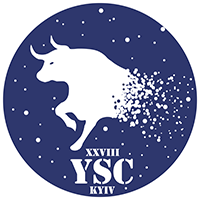Speaker
Description
We present the detailed analysis of 11 local luminous infrared galaxies (LIRGs) from ultraviolet, through far-infrared to radio ($\sim$70\, MHz to $\sim$15\,GHz) bands. We derive the physical properties through spectral energy distribution (SED) modeling using the Code Investigating GALaxy Emission (CIGALE) and UltraNest codes. The radio SEDs include our new observations at 325 and 610\,MHz from the GMRT, and the measurements from public archives. Our main results are (1) radio SEDs show turnovers and bends, (2) the synchrotron spectral index of the fitted radio spectra range between -0.5 and -1.9 and (3) the infrared luminosity, dust mass, dust temperature, stellar mass, star-formation rates (SFRs) and AGN fraction obtained from CIGALE falls in
the range exhibited by galaxies of the same class. The ratio of 60\mu m infrared and 1.4GHz radio luminosity, the 1.4GHz thermal fraction, and emission measure range betwen 2.1 and 2.9, 0.1\% and 10\%, 0.01 and 269.5*10^6 cm ^(-6) pc, respectively. We conclude that the turnovers seen in the radio SEDs are due to free-free absorption; this is supported by the low AGN fraction derived from the CIGALE analysis. The decomposed 1.4 GHz thermal and nonthermal radio luminosities allowed us to compute the SFRs using scaling relations. Higher infrared SFRs are noted for merger classes than nuclear galaxies with similar nonthermal fractions, indicating a better calorimetric behavior. Furthermore, a positive correlation is noted between infrared SFR obtained 10 Myr ago (as compared to 100 Myr ago) and 1.4 GHz radio (total and nonthermal) SFRs because similar synchrotron lifetimes are expected for typical magnetic field strengths (~50\mu G).

